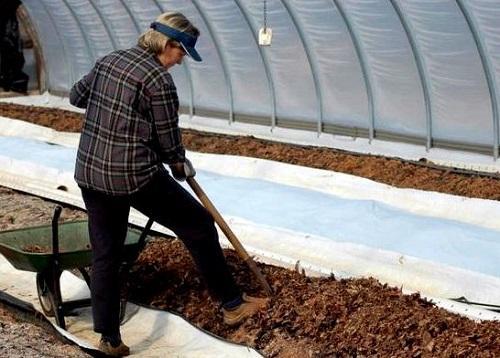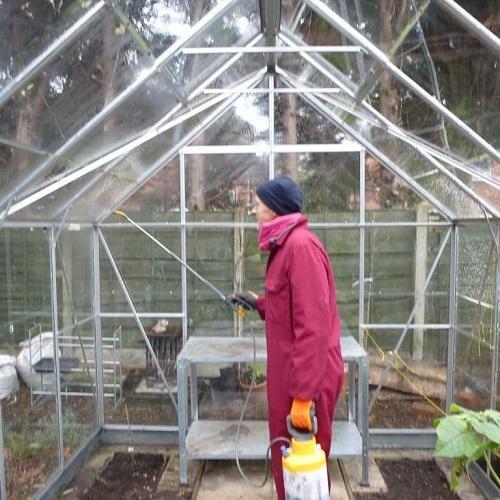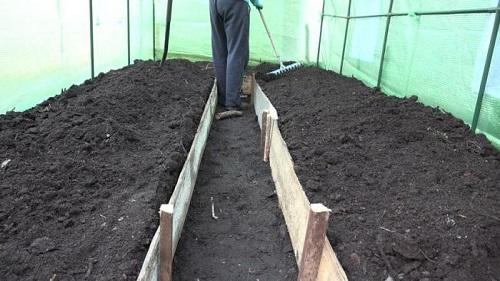Autumn work in the greenhouse: cleaning and fertilizing the beds
 Growing vegetables in a greenhouse requires a special approach, as crops grow there in a confined space. This depletes the soil, so it is important to add nutrients to the greenhouse beds every year. Otherwise, you will not be able to get a good harvest from the greenhouse. No less important is the fertilization of the soil in the greenhouse in the fall, while preparing it for wintering.
Growing vegetables in a greenhouse requires a special approach, as crops grow there in a confined space. This depletes the soil, so it is important to add nutrients to the greenhouse beds every year. Otherwise, you will not be able to get a good harvest from the greenhouse. No less important is the fertilization of the soil in the greenhouse in the fall, while preparing it for wintering.
However, before proceeding with fertilization, it is necessary to process greenhouseto kill various fungi and infections.
Preventive measures in the greenhouse

First of all, all plant residues should be collected on the beds, taken out and burned, and the structure itself should be thoroughly washed. The same applies to gardening equipment (rakes, hoes, shovels), it also needs to be taken out, cleaned of the earth and washed with laundry soap.
When the greenhouse is cleaned, the beds themselves must be disinfected. To do this, you can use one of the following methods:
- Spill the soil with boiling water and cover them with a thick film for a day. Repeat the procedure two more times. All three treatments should be done within one week.
- Sprinkle bleach (100 g per 1 sq. M.), Spill with potassium permanganate solution and dig up.
- Add Fitosporin or Trichodermin to the soil. Drop off siderates (mustard grows the fastest).
Preparatory work in the greenhouse must be started before the air temperature drops below 10 degrees Celsius.
Autumn feeding of greenhouse beds

After preventive measures, it's time to start directly fertilizing the soil in the greenhouse:
- scatter wood ash over the beds (at least 50 g per square, with increased soil acidity up to 200 g);
- spill the soil with a superphosphate-based solution (20 g per bucket of water);
- scatter potassium sulfate at the rate of 15 g of granules per square;
- spread out rotted compost, manure or bird droppings in the beds;
- dig up.
Instead of individual mineral components in the fall in the greenhouse, you can use complex preparations, for example, nitrophoska. In dry form, it is brought in at 50 g per square, for the preparation of a solution, which is then shed by the beds, it is necessary to take twice less for 10 liters of water.